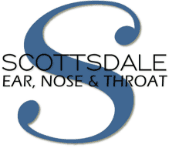
Dr. Kurt E. Heiland and Dr MacKechnie were recently featured in the Phoenix Magazine 2020 Top Doctor issue. Dr. Heiland has been chosen by his peers for more than 13 years in the otolaryngologist specialty (what most of us call ENT). Dr. MacKechnie is the first female otolaryngologist to make the Top Doctor’s list in over 12 years.
Dr. Heiland specializes in surgery of the head and neck, utilizing the latest technology and techniques. Dr. Heiland is also qualified to treat balance problems and is a member of VEDA (Vestibular Disorders Association).
Dr. MacKechnie is board certified in otolaryngology and treats a broad range of ear, nose, and throat conditions.
Answers To Your Questions About The
Revolutionary Transoral Robotic Surgery
Dr. Kurt E. Heiland and Dr. Cheryl A. MacKechnie specialize in performing minimally invasive, robotic-assisted head and neck surgery.
This innovative procedure can limit or eliminate the intensity of radiation therapy, reducing the side effects of traditional treatment. Additional benefits realized with transoral robotic surgery include avoiding tracheostomy, shorter hospital stays and fewer post-op complications.
The use of TORS results in shorter duration and virtually scarless recovery from head and neck surgery. Because access during a TORS procedure is through your mouth, our specialists have unprecedented access to the small and often difficult-to-reach areas in the throat.
Transoral Robotic Surgery (Tors) – What Is It?
Designed as a minimally invasive surgical procedure used to remove cancer of the tonsils, tongue base, and larynx, TORS uses a highly sophisticated machine known as the “da Vinci robot.” The procedure reduces recovery time as well as decreasing common risks associated with surgical procedures.
In addition to cancer surgery, this procedure produces positive results for patients suffering with sleep apnea.
What Are The Benefits Of This Procedure?
Head or neck surgery using TORS allows for the removal of malignant or non-malignant growths and tumors with greater precision and efficiency. The procedure eliminates the need for a neck incision and flap closure. This not only prevents unattractive scarring on your neck, but also speeds recovery and decreases the risk of complications that often develop during and after traditional surgical procedures.
How Long Is Recovery?
TORS recovery times are significantly shorter when compared to open procedures. Because patients experience fewer side effects, they usually return to their regular routines much sooner. Additional questions about complications and recovery from transoral robotic surgery should be directed to Dr. Heiland’s office.
Who Is A Candidate For Transoral Robotic Surgery?
TORS in not the best treatment option for all patients with cancer of the tonsils, tongue base, or larynx. When other treatment options provide positive results without side effects, our specialists do not recommend TORS. Candidates for the procedure are usually those who are not seeing positive results from other treatments. For example, a sleep apnea patient who receives inadequate or no benefit from CPAP is a potential candidate for TORS.
Kurt E. Heiland, M.D,. who has significant experience with the procedure is the most qualified specialist in the region when it comes to offering TORS or recommending an alternate form of treatment.
What About Side Effects?
An initial period of discomfort, like with a tonsillectomy and the slight risk of bleeding after surgery, are common side effects after the procedure. Speech and swallowing after TORS provide minor issues for most patients.
Post-operative bleeding only occurs in about 3 out of 100 patients, while only 1 in 100 of these patients will require some form of intervention to stop bleeding.
Will I Have Any Visible Scars?
Access to the area where the procedure is performed is usually through the mouth, so TORS leaves no external scars. However, when used in combination with the removal of lymph nodes, there can be a single scar on the neck. We make every effort to assure that scarring is as inconspicuous as possible.
What Our Patients Are Saying

Dr. Heiland was full of good advice
I was there pre covid and everyone was very nice especially the office manager. The testing lady was excellent too and Dr Heiland was full of good advice and very easy to talk to.
Jim J

Dr. Heiland and his staff have been taking care of myself and my family for many years.
Dr. Heiland and his staff have been taking care of myself and my family for many years. He is a caring doctor who shows his dedication by taking time with his patients and answering all questions. Dr. Heiland is a trusted professional and friend!
Kathy Allen

Dr. Cheryl Mackechnie is excellent to work with.
She Performed my surgery this month and was very resposive and available to me afterwards when I had question/concerns. I would definitely recommend Dr. Mackechnie!
Donita Mcglasson

They listened to my issues and concerns
Unfortunately - I'm a lifetime award winner for allergy/sinus issues, which in many cases, requires short-term assistance from experienced professionals. I called Dr. Heiland's office and secured an appointment within 48 hours. Bridget (PA) and the audiologist were both superb.
Dale V

Debbie is the best audiologist I have met in my 40 years of nursing
Very caring physicians and staff and when you have Meniere's Disease that is so important. It is very easy to get an appointment or phone call when you are having an issue. Plus Debbie is the best audiologist I have met in my 40 years of nursing.
Joanne M

Dr. Heiland has been my doctor for 20 years.
Dr. Heiland has been my doctor for 20 years when i was diagnosed with stage 3 cancer in neck area. His aggressive treatment of my cancer is main reason I am still alive. His bedside manner is as good as it gets. He is without a doubt the very best head and neck surgeon in the phoenix area.
Bill Hare Scottsdale AZ
Patient Resources
The latest news, technological breakthroughs, and patient resources available from the experts at Scottsdale Ear, Nose & Throat.

